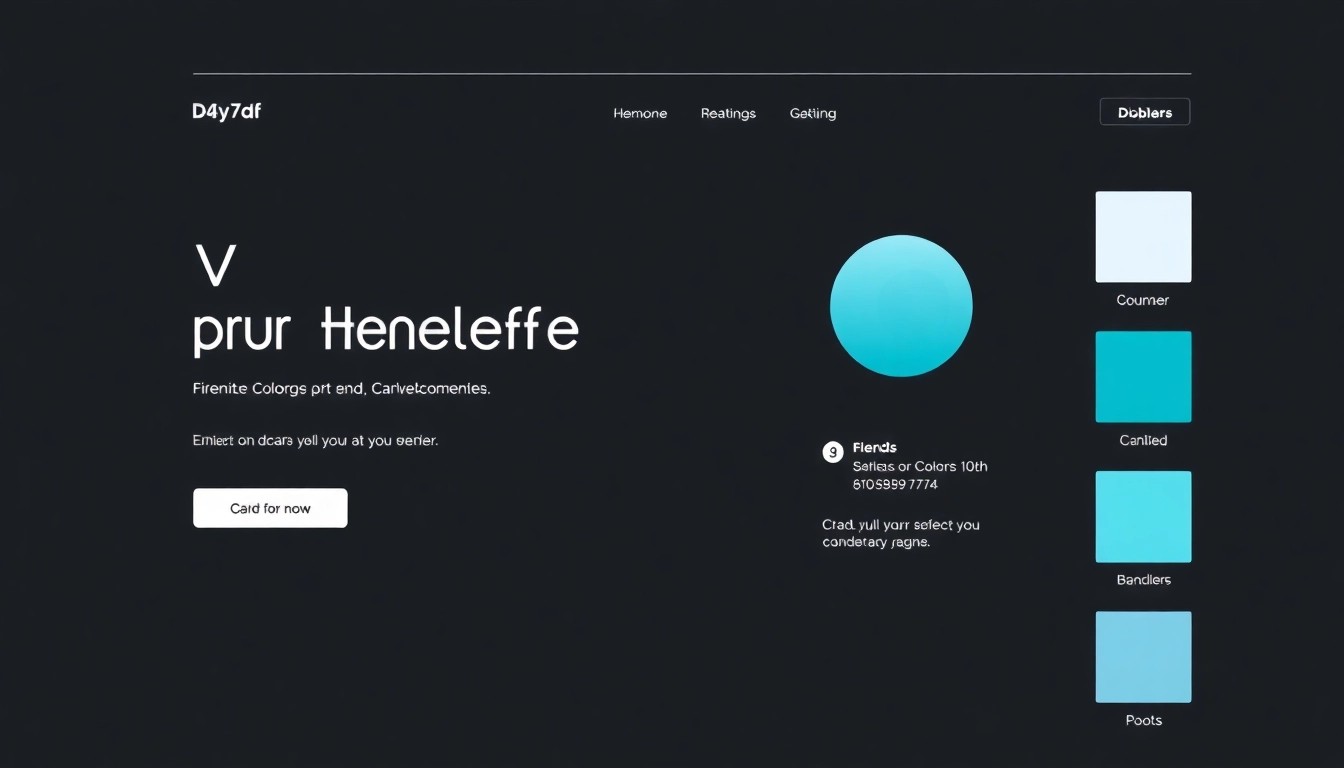Mastering Crypto Trading with Bybit: An In-Depth Guide for 2025
In the rapidly evolving landscape of cryptocurrency, understanding how to navigate trading platforms efficiently is crucial for both newcomers and seasoned investors. Among the most popular exchanges today, Bybit stands out for its robust features, user-friendly interface, and comprehensive educational resources. For those venturing into crypto trading, especially using platforms like Bybit, leveraging an effective Bybit crypto tutorial is essential to maximize potential returns and minimize risks. This guide aims to provide a detailed walkthrough of using Bybit in 2025, from the basics of account setup to advanced trading strategies, ensuring you develop the skills necessary to succeed in today’s competitive crypto environment.
Introduction to Bybit and Crypto Trading Basics
Understanding the Bybit Platform Features
Bybit has established itself as a leading crypto trading platform, particularly favored for derivatives trading such as perpetual contracts, futures, and spot trading. Its core features include high liquidity, competitive fee structures, and innovative tools like integrated chart analysis, risk management options, and automated trading support. The platform’s intuitive interface caters to both beginners and experts, offering a seamless trading experience. Key features worth noting include:
- Leverage Trading: Up to 100x leverage on selected products, allowing traders to amplify their positions—though with increased risk.
- Advanced Charting Tools: Integration of TradingView charts, enabling technical analysis with numerous indicators and drawing tools.
- Risk Management: Stop-loss, take-profit orders, and adaptive margin systems help traders manage potential losses effectively.
- Security Measures: Cold storage for assets, multi-factor authentication, and regular security audits bolster user trust and safety.
Key Terminology for Crypto Traders
Understanding fundamental terminology is critical to avoid confusion and make informed decisions. Some key terms include:
- Spot Trading: Buying or selling actual cryptocurrencies for immediate delivery.
- Futures and Derivatives: Contracts derived from the underlying asset, allowing speculation on price movements without owning the actual crypto.
- Leverage: Borrowed funds to increase position size, magnifying gains but also risks.
- Long and Short Positions: Buying (long) expecting the price to rise, or selling (short) anticipating it will fall.
- Margin: Collateral required to open leveraged positions.
- Stop-Loss and Take-Profit: Orders set to automatically close a position at predefined price levels to lock in profits or limit losses.
Setting up Your Account Securely
Security is paramount in crypto trading. When setting up your Bybit account, follow these best practices:
- Create a strong, unique password combining uppercase, lowercase, numbers, and special characters.
- Enable two-factor authentication (2FA), preferably with an authenticator app like Google Authenticator.
- Register through verified email addresses and complete KYC (Know Your Customer) procedures to enhance security and compliance.
- Regularly monitor account activity and set up withdrawal whitelist addresses.
Step-by-Step Guide to Using the Bybit Crypto Tutorial
Depositing Funds and Initial Setup
Getting started involves depositing cryptocurrencies or fiat (via supported payment gateways). To deposit:
- Log into your Bybit account and navigate to the Wallet section.
- Select ‘Deposit,’ choose your preferred cryptocurrency, and generate a deposit address.
- Transfer funds from your external wallet or exchange to this address. Confirm transactions on the blockchain.
Alternatively, if fiat deposits are enabled in your region, utilize bank transfers or integrated payment options. Once funds arrive, they are available for trading across various markets on Bybit.
Executing Your First Trades
For beginners, initiating a trade can be simplified through the platform’s intuitive interface:
- Select the trading market—spot or derivatives (e.g., perpetual contracts).
- Choose the trading pair, such as BTC/USD or ETH/USDT.
- Define the trade size based on your risk appetite.
- Select the order type: market (immediate execution) or limit (at a specified price).
- Set optional leverage for derivatives trading, keeping in mind the increased risk involved.
- Review and confirm the order before executing.
Monitoring your open positions on the trading dashboard allows you to see real-time P&L and adjust strategies accordingly.
Managing Risk with Leverage and Stop-Loss Orders
Effective risk management is central to successful trading. Use stop-loss and take-profit orders to automate exit points and limit losses. For example, if you buy Bitcoin at $30,000 and set a stop-loss at $28,500, your position will automatically close if the price drops to this level, protecting your capital. Similarly, take-profit orders can lock in profits when the asset hits a target price. Applying leverage increases both potential gains and losses, so always trade within your risk tolerance and avoid over-leveraging.
Advanced Strategies in the Bybit Crypto Tutorial
Utilizing Chart Analysis and Indicators
Technical analysis remains a cornerstone of professional trading. Bybit’s integrated charting tools, powered by TradingView, offer numerous indicators such as Moving Averages, RSI, MACD, and Bollinger Bands. Traders should analyze trends, support and resistance levels, and volume patterns to inform entry and exit timing. Combining multiple indicators can improve prediction accuracy, but beware of overcomplicating analysis—simplicity often yields better results.
Exploring Derivatives and Futures Trading
Derivatives trading on Bybit allows investors to hedge positions, speculate on price movement, or capitalize on volatility. Futures contracts enable locking in prices for future delivery while offering leverage. Advanced traders often employ strategies like margin trading or grid trading algorithms to optimize profit potential. However, these require a deep understanding of market dynamics, margin calls, and liquidation risks, emphasizing continuous education and disciplined risk protocols.
Participating in Staking and Promotional Events
In addition to trading, Bybit offers staking programs for certain tokens, allowing users to earn yield on held assets. Also, participating in promotions, trading competitions, or signing up bonuses can enhance profitability. Staying updated with platform announcements and leveraging referral programs can further increase earning opportunities, all while diversifying your crypto engagement beyond simple trading.
Common Challenges and How to Overcome Them
Avoiding Emotional Trading Pitfalls
Emotional reactions often lead to impulsive decisions, especially during high volatility. To mitigate this, establish clear trading plans, utilize automation tools like stop-loss orders, and stick to predetermined risk levels. Regularly reviewing trades and keeping a trade journal can help identify emotional biases and improve discipline.
Mitigating Platform Technical Issues
Technical glitches can occur during peak market activity. Prepare by ensuring stable internet connections, having backup devices, and understanding platform maintenance schedules. Use demo accounts to test new strategies without risking real funds, and always keep backup records of your trade history and strategies.
Strategies for Consistent Profitability
Consistent success involves disciplined risk management, continuous education, and adaptability. Diversify trading strategies, avoid overtrading, and only risk a small percentage of your capital per trade. Incorporate routine analysis of your performance metrics to identify profitable patterns and areas needing improvement.
Measuring Your Trading Performance
Tracking Key Metrics and Analytics
Utilize platform analytics to monitor your profit/loss, win rate, average return per trade, and maximum drawdown. Maintaining detailed records helps in assessing strategy effectiveness and identifying optimal trading times and pairs.
Adjusting Your Approach Based on Results
Regularly review your trading outcomes and modify your strategies accordingly. For instance, if a particular asset or trading style yields consistent losses, consider reallocating resources or refining your approach. Embrace continuous learning through webinars, tutorials, and community discussions to keep up with evolving trends.
Continuous Learning and Platform Updates
The crypto environment is dynamic. Staying informed about platform updates, regulatory changes, and emerging technologies such as DeFi and token staking enhances your capabilities. Engage with official tutorials, participate in community forums, and subscribe to expert insights to refine your skills continually.



